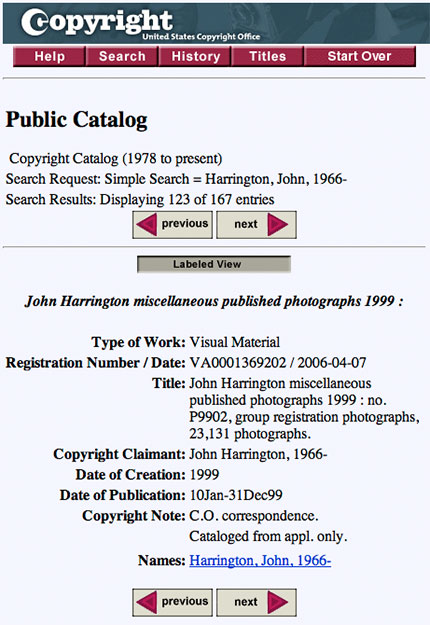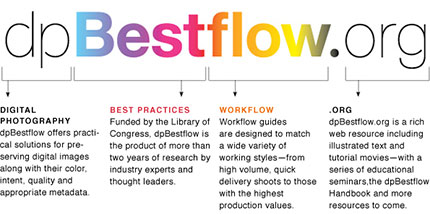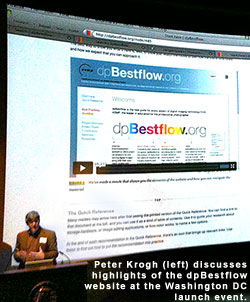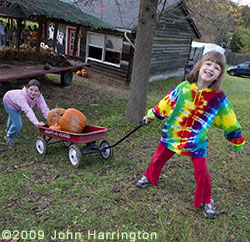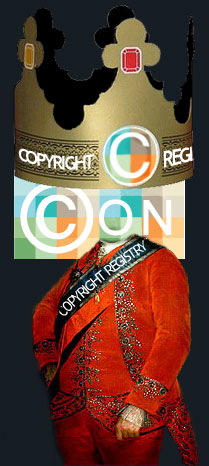 We photographers have seen more than our fair share of fly-by-night schemes. We've seen it all before: companies that burst onto the scene and attempt to capture our attention by making grossly exaggerated claims, offering "free" services with promises of protecting our rights, connecting us with clients or monetizing our images, then burn out their funding sources, fail to attract a buyer, and then go belly up, leaving photographers feeling more like the suckers that they think we are.
We photographers have seen more than our fair share of fly-by-night schemes. We've seen it all before: companies that burst onto the scene and attempt to capture our attention by making grossly exaggerated claims, offering "free" services with promises of protecting our rights, connecting us with clients or monetizing our images, then burn out their funding sources, fail to attract a buyer, and then go belly up, leaving photographers feeling more like the suckers that they think we are.
The more insidious of these snake oil operations are nothing short of extortion schemes. They threaten photographers that our images will be stolen or that our businesses will fail due to ____________________ (fill in the blank: orphan works, microstock, the digital revolution, etc.) UNLESS we immediately __________________ (fill in the blank: submit images, pay subscription fees, join a licensing program, etc). From micro-stock organizations, to registries pre-selling their services on the fear of Orphan Works legislation, and so on, creative minds are often seen as easy marks by the corporate mindset. (Getty Images comes immediately to mind.)
Near the bottom of the barrel of the flim-flammers competing for photographers' attention (and for pieces of our copyrights) are the "bait and switch" scams, which launch with fearmongering extortion attempts and hidden agendas. Thus, formal "bait-and-switch" scams are actually illegal. Like wolves in sheep's clothing, they masquerade as one type of business, when they really are something very different. We eventually find that their "free" services were designed to draw us (and our images) into a corral, and once we are in, the gates close, and the shearing begins. We are told that if we really want to protect or monetize our images, we'll need to pay up -- either with a fee for services, a subscription fee, or a piece of the revenue generated by our images.
At the very bottom of the barrel are the charlatans that not only hide their agendas, but engage in campaigns of deception, putting forth outright lies about their services and their plans for the future, then later shedding their "we're here to help you"-disguise to reveal their true business plans, which almost invariably involve THEM monetizing OUR images once they have a critical mass of images corralled. After demonstrating that they cannot be trusted, how do these liars expect that we will entrust them with our images, our money or both? Are they really that dumb? Are WE really that dumb?
Case in point: C-Registry.us
Where this organization falls on the continuum between upstanding photographer-friendly business and fly-by-night operation, I will leave you to decide.
After they launched in the Fall of last year, I noted
here with great concern that although their site failed to mention any intent to license images submitted to the registry, the terms and conditions buried on their site revealed their plans to morph into an image licensing platform. I suggested that they were attempting to capitalize on the massive fears of photographers swirling around the orphan works legislation, in an attempt to rope photographers into submitting images (for "free"). At the time, I forecast (accurately) that C-registry was attempting to deceive photographers with this free offer, and that C-Registry would later solicit their captive audience of photographers into participating in an image licensing scheme. Other industry watchdogs and associations also picked up on this, and C-Registry's president, Randy Taylor, found himself in the hotseat.
The industry (myself included) expressed serious concern that C-Registry was actively seeking endorsements from trade associations and asking photographers to submit images to C-Registry for "free," while boldly lying to photographers about C-Registry's real intentions. Namely, C-Registry has always intended first populate their system with images, and then to sucker punch the photographers (and to leave the trade associations with their pants around their ankles) by springing a licensing scheme on us. Months ago, when I publically pleased with Randy to tell the truth about his licensing plans, Randy responded in writing, to thousands of photographers on the APAnet forum, and lied.
On APAnet, I re-presented my questions posed previously, asking Randy if there were any circumstances under which c-registry would require a fee, royalty, special paid subscription/membership level or other compensation to c-registry for:
Q: The act of facilitating a grant of license between the rights holder and the image user.
Randy Taylor: "NO"
Q: The granting of a license on behalf of the rights holder?
Randy Taylor: "NO"
A smoking gun reveals the undeniable truth. A month earlier, on February 23, 2009, Randy Taylor posted this message to the NY Tech Meetup Forum (emphasis added):
" We are the 'ASCAP of images', empowering creators and corporate rightsholders with copyright tracking, enforcement and monetization...With one click from any web site with images, video or mashups, regardless of language, The Copyright Registry™ guides users to the creator, permissions process, and U.S. Copyright record for that content. Conversely, creators use the registry to find the URL's where copies of their creative works appear. This technology supports creators and rights holders by enabling a tollgate for all visual content used on the Internet, which monetizes unauthorized use, mitigates infringement risk and addresses the Orphan Works Act."
Three minutes later, after realizing that he had revealed his licensing scheme on a public forum, Randy Taylor posted a second message:
"Sorry, I put this in the wrong place. It was meant for proposals for meetup presentation. Please delete."
(Continued after the Jump)
A disgusting example of just how far some people will go to mislead both photographers and also attempt to mislead photography trade associations while revealing their true intentions to potential investors. This proves that while Taylor was busy sweet talking the trade associations and making blog posts denying to everyone he planned to generate royalties/licensing revenue off of the backs of photographers who register their images for "free" in his Copyright Registry, he was aggressively seeking funding and presentation opportunities to allow C-Registry to serve as "a tollgate for all visual content used on the Internet, which monetizes unauthorized use..."
In a two hour meeting with Taylor here in Washington DC this week, following his meeting with the Copyright Office where he learned that an API that would connect his - or any - system to some form of automated registration system was at least 2 years off, we asked him how he could claim that he was not involved in image licensing, while at the same time claiming to be the "ASCAP of images."
At first, he said "you've heard the phrase 'ASCAP of images?'", as if he was going to deny it. Then I said "I've seen it typed". He said "interesting. I'll have to dig that one out, where I said that."
To save Randy the trouble, I've included the text above, and here is the link to his post, and membership listing in a group promoted as an opportunity to"demo something cool to New York's tech community (geeks, investors, entrepreneurs, hackers, etc)", and a screen grab too:
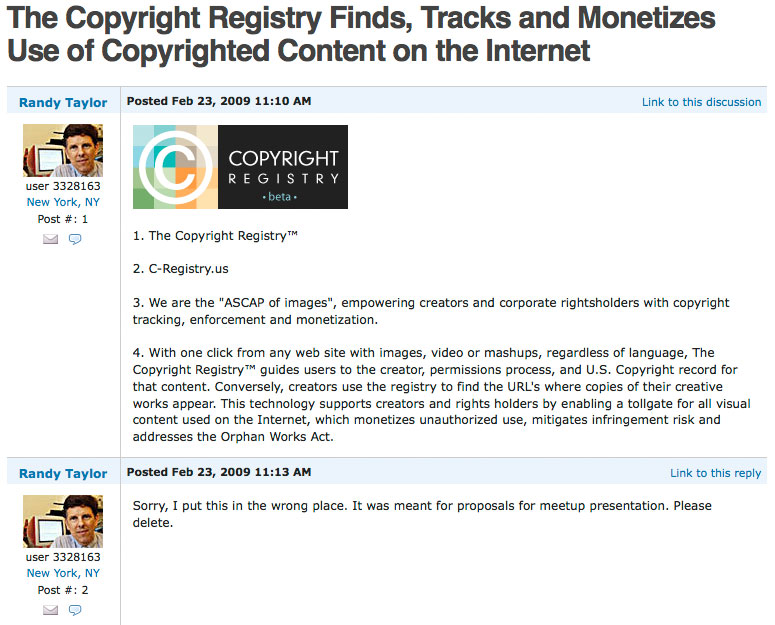
When we pointed out to Randy that ASCAP is a non-profit, and that royalty collection and distribution in all industries is best managed by non-profits, Taylor acknowledged:
"there is a risk that we ramp this thing up, we sell it to somebody, and they begin to do a Getty...that somebody is going to take this thing over, and gradually reshape it once it's created into something that's less and less attractive to photographers".
We followed up and asked what he thought that the Copyright Registry might take as a royalty percentage for handling these images. Taylor answered 20%, presumably meaning that Taylor would take a 20% fee for managing the licenses transactions and resulting royalties.
I then asked Taylor how, given that he had so clearly always planned that C-Registry will be a licensing/royalty platform, he could justify his earlier repeated written statements that C-Registry would not engage in image licensing. Taylor responded that he was earlier "forced...cornering us into a denial that, to some degree is going to have to be reversed at a later date."
In other words, Taylor admits that he was "forced" to lie to all of us, and that "at a later date" he intends to tell the truth.
I am making an educated guess that the "later date" is today.
Taylor is going to learn that lying to his potential customers (especially lies of the repeated, BIG, BALDFACED variety) is not a great way engender confidence and trust. Especially when he expects that photographers, already punch-drunk from other shams so much so that they should be asking for a safe-word as a part of their contract, will trust him to license photographers' images and collect and accurately report royalties to us. Who knows what else he has up his sleeve? He seems to think that as long as he delivers royalty checks to photographers, photographers will trust him. Wrong. Would these royalty checks and the statements even be honest accountings? Photographers already have been bamboozled by stock photo agencies for under-reporting income to photographers.
Had Taylor and his C-Registry launched with an announcement that they intended to serve as a licensing platform, he would have been upfront about his profit motives, allowing photographers to decide if they wanted his organization to serve as a form of a post-use stock-licensing-resolution agency, and I would have no complaint. My complaint is with Taylor's dishonest, manipulative tactics, and his ongoing attempts to mislead photographers. Taylor has proven that he is not a man of his word, and is not to be trusted.
Taylor also claims that he informed certain trade associations of his ASCAP plans and that the association leaders signed non-disclosure agreements. In a follow-up letter to Photo Business News after our DC meeting, Taylor wrote regarding our assertion that he "...obtained trade association endorsements by lying to them about your core business plan.":"I must respond in a way that will not violate signed NDAs between our company and third parties. You say we have "obtained trade association endorsements by lying to them". That is completely false. In more than one instance, we fully disclosed all details of our business plans, including trade secrets of exactly how we intend to execute our plans, in face-to-face meetings with key people of some trade associations, including the legal council, head people and some Board members of those associations. Those associations were not lied to in any way and do not "feel" lied to."
If that is true, and if those association leaders have stood by silently and even promoted C-Registry while allowing Taylor to continue to lie to trade association members and to all photographers, you will read more about it here at a "later date."
Related Stories:
Please post your comments by clicking the link below. If you've got questions, please pose them in our Photo Business Forum Flickr Group Discussion Threads.[More: Full Post and Comments]
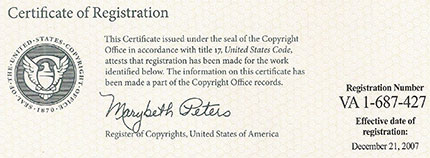 I am someone who strongly encourages everyone to register their copyright. Doing so is your ticket to federal court when you are infringed, and provides for remedies like statutory damages and repayment of attorney's fees when you win. These added benefits make pursuing a copyright infringer far more likely to result in a positive outcome for you.
I am someone who strongly encourages everyone to register their copyright. Doing so is your ticket to federal court when you are infringed, and provides for remedies like statutory damages and repayment of attorney's fees when you win. These added benefits make pursuing a copyright infringer far more likely to result in a positive outcome for you. 

